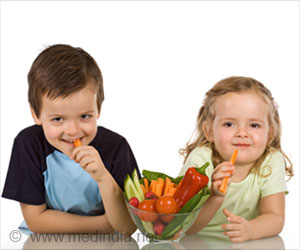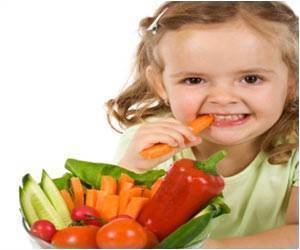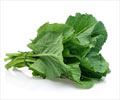
What are the Benefits of Eating //Healthy?
Healthy eating habits can lower the risk of obesity, cardiovascular disease and cancer. But, as many parents know, young children often don’t like eating their greens.‘Rewarding toddlers for tasting vegetables plays a major role in increasing their willingness to try different vegetables.’
Tweet it Now
“It’s important to start eating vegetables from a young age,” says researcher Britt van Belkom, of the Youth, Food & Health program at the Institute for Food, Health & Safety by Design, Maastricht University Campus Venlo, Venlo, The Netherlands.“We know from previous research that young children typically have to try a new vegetable eight to ten times before they like it.
“And so we looked at whether repeatedly asking children to try some vegetables would make them more willing to eat their greens. We were also interested in whether providing a fun reward would make a difference.”
Are Children Willing to Try New Vegetables?
598 children (1-4 years old) at daycare centers in Limburg, the Netherlands, took part in “The Vegetable Box” program.Miss van Belkom and colleagues randomly assigned them to one of three groups: Exposure/Reward, Exposure/No reward or Control (No exposure/No reward).
Advertisement
| Total | Exposure/Reward | Exposure/No reward | No exposure/No reward | |
|---|---|---|---|---|
| N day-care centres | 26 | 10 | 9 | 7 |
| N children (pre-test) | 598 | 233 | 213 | 152 |
| N children (post-test) | 447 | 182 | 162 | 103 |
Those in the “Reward” group were given fun, non-food rewards, such as a sticker or toy crown, when they tried some vegetables.
Advertisement
Consumption was measured by giving them the chance to taste bite-sized pieces of six vegetables (tomato, cucumber, carrot, bell pepper, radish and cauliflower) and counting how many they were willing to taste.
At the pre-test in the control group children could identify around 8 vegetables and post-test this increased to around 10. For the Exposure/No reward and the Exposure/Reward groups, at the pre-test children could identify around 9 vegetables and after around 11.
For the willingness to try vegetables, the maximum score was 12 (children were offered 2 bite-sized chunks of 6 different vegetables). At the pre-test, they were willing to try around 5-6 vegetables in all the groups. This decreased in the control group, was unchanged in the Exposure/No reward group and increased towards 7 in the Exposure/Reward group.
Miss van Belkom says: “Regularly offering vegetables to toddlers at daycare centers significantly increases their ability to recognize various vegetables.
“But rewarding toddlers for tasting vegetables appears to also increase their willingness to try different vegetables.
“The type of reward is, however, very important – it should be fun but not food.”
Source-Eurekalert













